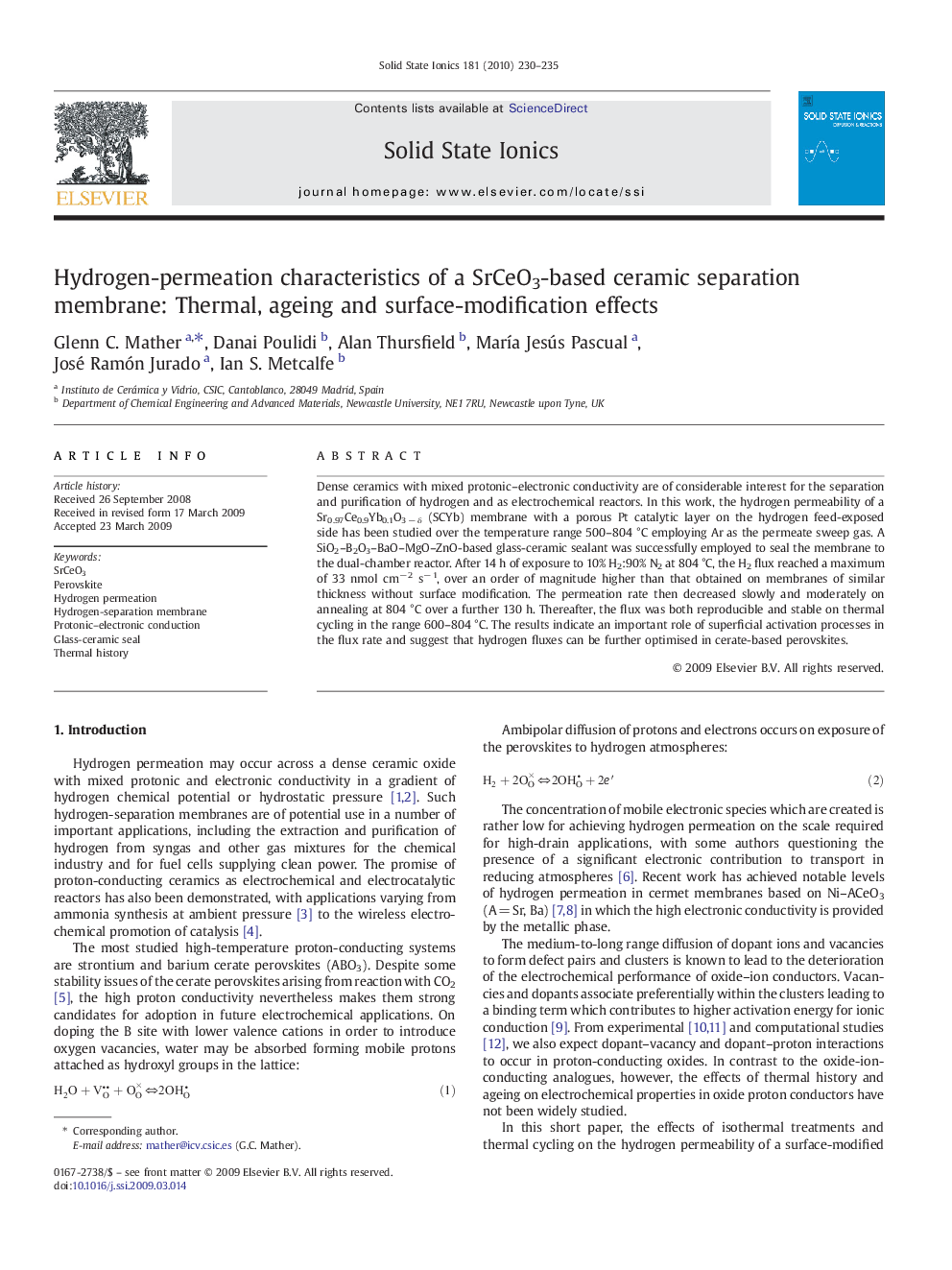| Article ID | Journal | Published Year | Pages | File Type |
|---|---|---|---|---|
| 1296755 | Solid State Ionics | 2010 | 6 Pages |
Dense ceramics with mixed protonic–electronic conductivity are of considerable interest for the separation and purification of hydrogen and as electrochemical reactors. In this work, the hydrogen permeability of a Sr0.97Ce0.9Yb0.1O3 − δ (SCYb) membrane with a porous Pt catalytic layer on the hydrogen feed-exposed side has been studied over the temperature range 500–804 °C employing Ar as the permeate sweep gas. A SiO2–B2O3–BaO–MgO–ZnO-based glass-ceramic sealant was successfully employed to seal the membrane to the dual-chamber reactor. After 14 h of exposure to 10% H2:90% N2 at 804 °C, the H2 flux reached a maximum of 33 nmol cm− 2 s− 1, over an order of magnitude higher than that obtained on membranes of similar thickness without surface modification. The permeation rate then decreased slowly and moderately on annealing at 804 °C over a further 130 h. Thereafter, the flux was both reproducible and stable on thermal cycling in the range 600–804 °C. The results indicate an important role of superficial activation processes in the flux rate and suggest that hydrogen fluxes can be further optimised in cerate-based perovskites.
